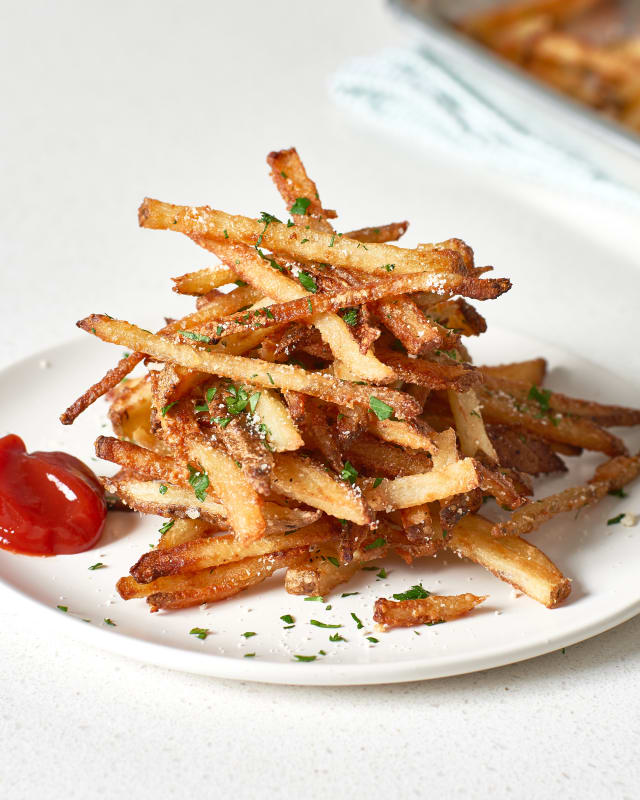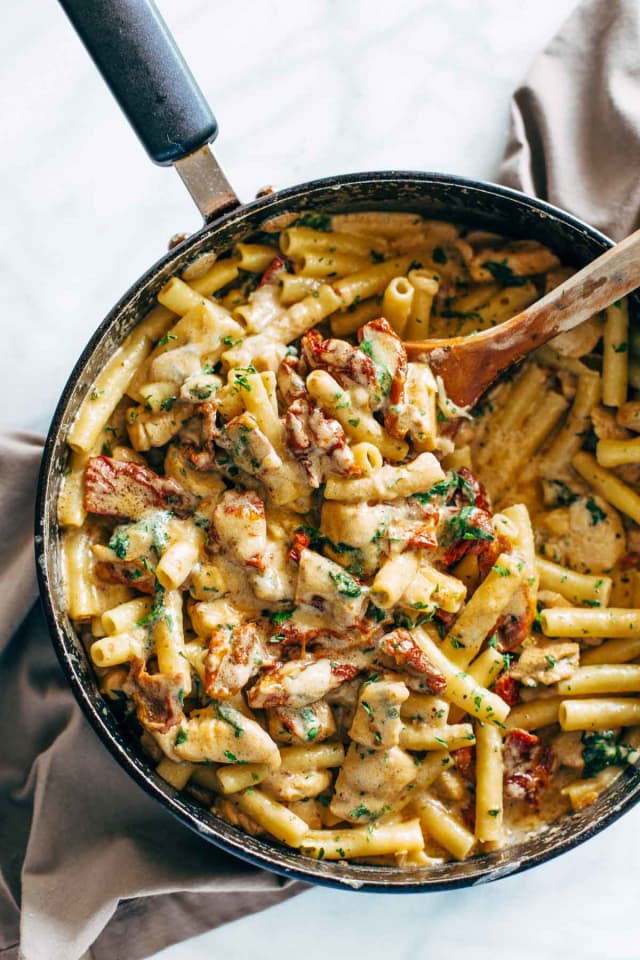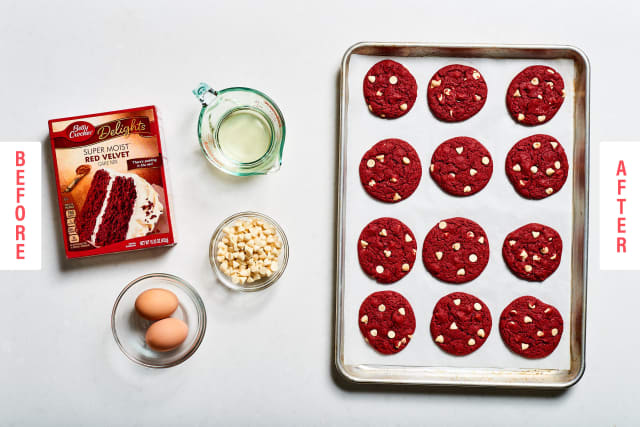This
post was originally published on
this sitehttps://www.girlsgonestrong.com/
Due to intuitive eating’s rise in popularity over the last few years, there’s a good chance you’ve heard of it before. Perhaps you’ve seen a personal trainer dismiss intuitive eating as an excuse to gorge on junk food and never exercise. Or maybe you’ve read a blog post from a nutrition coach heralding intuitive eating as an amazing weight-loss method.
No matter how the phrase came into your vocabulary, it’s likely that you’re confused about what exactly intuitive eating is and whether or not you should care.
Intuitive eating is a non-diet approach to eating and living that centers on eating in a way that makes you feel good (as opposed to eating to look a certain way).
Where a diet might say, “This diet is the answer to your problems,” intuitive eating would say, “You have all the answers you need inside of you already.” The practice of intuitive eating teaches you how to tune into your body’s innate wisdom around food and movement to figure out what and when you should be eating.
 The idea of using your intuition to guide your eating may seem scary, confusing, or downright ridiculous. But remember, we were all born intuitive eaters. As children, we ate with curiosity and interest. We asked for food when we were hungry, and we refused to eat any more when we were full. We ate the foods we enjoyed while ignoring the ones we didn’t (much to our caregivers’ frustration).
The idea of using your intuition to guide your eating may seem scary, confusing, or downright ridiculous. But remember, we were all born intuitive eaters. As children, we ate with curiosity and interest. We asked for food when we were hungry, and we refused to eat any more when we were full. We ate the foods we enjoyed while ignoring the ones we didn’t (much to our caregivers’ frustration).
It was only when we were indoctrinated into a culture of dieting and body obsession that we started to make decisions about our eating based on external factors instead of internal ones. So the basis of intuitive eating is more familiar than you think, and it’s something you can work your way back to with practice and patience.
Unlike diets with strict rules, intuitive eating has more wiggle room in its interpretation and execution. In fact, that’s what’s so wonderful about it. But as a result of that flexibility, it has been easy for some to reject intuitive eating as unhealthy or unrealistic, or to co-opt parts of intuitive eating without truly understanding the whole method.
I see some of the most common misconceptions about intuitive eating repeated frequently, so let’s set the record straight.
Myth: Intuitive Eating Has No Structure and Leaves People to Fend for Themselves
Reality: Intuitive eating has a flexible structure that allows people to tailor it to their individual needs.
While it’s true that intuitive eating is not based on hard and fast rules like diets are, the creators of intuitive eating, dietitians Evelyn Tribole and Elyse Resch, based it on ten principles which act as guidelines [1].
The ten principles for eating intuitively include:
- Rejecting the diet mentality.
- Honoring your hunger.
- Making peace with food.
- Challenging the food police
- Respecting your fullness.
- Discovering the satisfaction factor.
- Honoring your feelings without using food.
- Respecting your body.
- Exercising to feel the difference.
- Honoring your health through gentle nutrition.
When first beginning to practice intuitive eating, the ten principles are especially helpful. As time goes on, the guidelines leave room for you to find what works best for you and adapt them to your own preferences.
Eating intuitively can be a challenging method to adopt at first if you have a history of dieting, disordered eating, or eating disorders. If that’s the case for you, I recommend working with a doctor, therapist, dietitian, or coach who specializes in intuitive eating to help provide guidance and support.
Myth: Intuitive Eating Is a Free-for-All Excuse to Eat Whatever You Want, Whenever You Want
Reality: While you could technically eat whatever you want, whenever you want as an intuitive eater, intuitive eating is about honoring what your body needs to feel its best.
When people first begin to loosen the diet reins and practice eating intuitively, they often overeat foods that they have been restricting. This makes complete sense psychologically, and it’s also the reason people get caught in the binge and restrict cycle.
We restrict foods until our willpower gives out, and then we binge on them until we feel so guilty and ashamed that we start the process all over again. The difference with intuitive eating is that you’re giving yourself unconditional permission to eat the foods that you have restricted in the past — for good.
 At first you may overeat those foods because your body is waiting for the restriction that it believes will be coming. This can be a particularly precarious time if you’re just starting out with intuitive eating. It’s easy to convince yourself that you’re addicted to certain foods, can’t be trusted, and would be better off dieting when you can’t seem to stop yourself from eating copious amounts of carbs.
At first you may overeat those foods because your body is waiting for the restriction that it believes will be coming. This can be a particularly precarious time if you’re just starting out with intuitive eating. It’s easy to convince yourself that you’re addicted to certain foods, can’t be trusted, and would be better off dieting when you can’t seem to stop yourself from eating copious amounts of carbs.
But if you stay the course and continue to remind yourself that no foods are off limits to you and that you can have any food you want at any time, your brain will get the message and stop sending the “Eat all the carbs!” signal. Eventually you’ll get the, “I’m finally tired of carbs and would really like some veggies” signal, or your brain’s variation of that.
I know that it’s hard to believe your body is capable of balancing out your food intake without outside rules, but with faith and practice you will surprise yourself. There is a middle ground between restrictive dieting and eating a whole box of donuts.
Myth: I’ll Definitely Gain Weight If I Allow Myself to Eat Intuitively
Reality: While intuitive eating is not a weight-loss method, that doesn’t necessarily mean you’ll gain weight if you practice it.
If you’ve ever heard someone suggest using intuitive eating as a method for weight loss, understand that they are entirely missing the point. In fact, intuitive eating requires putting weight loss on the back burner. And that’s because it’s both difficult and confusing to pursue weight-loss goals while also trying to heal your relationship with food and learning to eat according to your body’s signals.
 Changing the way you eat can lead to weight change, but there’s no way to know how that change will manifest in your unique body (if it does at all). Changes to your body’s weight are determined by many factors, including your natural set point weight range, genetics, hormones, movement, your individual history of dieting, and more.
Changing the way you eat can lead to weight change, but there’s no way to know how that change will manifest in your unique body (if it does at all). Changes to your body’s weight are determined by many factors, including your natural set point weight range, genetics, hormones, movement, your individual history of dieting, and more.
Part of the intuitive eating process is letting go. Letting go of unrealistic expectations for your body. Letting go of unhealthy views of food and exercise. But letting go doesn’t mean you’re giving up on yourself; it means you’re learning to let yourself be.
Remember, the pursuit of weight loss isn’t going anywhere. You can always go back to it if you decide intuitive eating isn’t for you. But wouldn’t it be nice to not be chasing weight loss for once and to focus on how you feel instead?
Myth: Intuitive Eaters Don’t Care About Exercise and Nutrition and Are Setting a Bad Example
Reality: Exercise and nutrition are a part of the intuitive eating principles, but they come later in the process.
In traditional diet culture, exercise and nutrition are tools of punishment. They are used to achieve “goodness” and superiority. In intuitive eating, the goal is to move away from those dogmatic and obsessive portrayals of exercise and nutrition in favor of something that looks more like self-care than self-control. But it’s important to work on healing your relationship with food and your body first.
 Once you’ve practiced intuitive eating long enough to feel more comfortable with it, then you can begin to think more about which foods make you feel your best, are the most satiating, and give you the most energy. At that point you can also start to shift your relationship with exercise to one that brings you joy and isn’t based on burning a certain amount of calories or losing a specific amount of weight.
Once you’ve practiced intuitive eating long enough to feel more comfortable with it, then you can begin to think more about which foods make you feel your best, are the most satiating, and give you the most energy. At that point you can also start to shift your relationship with exercise to one that brings you joy and isn’t based on burning a certain amount of calories or losing a specific amount of weight.
This process does require caution so as not to get sucked back into diet culture. When done correctly, reintroducing nutrition and exercise into your life in a more sustainable and caring way can transform your relationship with your body and help you redefine what health means to you.
Myth: Listening to Your Body Means Ignoring Your Brain
Reality: Your brain and body must work together to eat intuitively and feel your best.
With so much emphasis on the importance of listening to hunger and fullness cues, I can understand why some people think that intuitive eating requires you to follow those cues without any other input. But our brains and bodies come as a pair, and consequently, they make decisions together.
For example, maybe it’s mid-afternoon and my body is telling me I am only hungry enough to have a small snack. I also know that I have a meeting for several hours in the evening that will keep me from having dinner when I typically get hungry for it. In that case, my brain would probably suggest that I ignore my current hunger level and eat a larger snack or small meal so that I won’t be too hungry during my meeting.
Or perhaps I’m stuck at the airport for several hours for a layover and I can’t find anything to eat that will truly satisfy me. I would most likely choose something subpar to eat until I could get to a location with better options, rather than eat nothing at all.
Just because intuitive eating helps you gain back the mental bandwidth you were previously using to think obsessively about food, exercise, and your body, doesn’t mean you completely shut off your brain. Eating according to more flexible guidelines requires you to make judgment calls and to learn from them.
Diets may be easier in the short term, but intuitive eating will bring you peace in the long run.
The concepts behind intuitive eating are simple enough to understand, but in a world caught up in dieting they can be tricky to execute. Intuitive eating goes against everything we’ve been taught to believe about food and our bodies, whereas diets give us clear cut rules to follow, which can be appealing.
However, between the two, intuitive eating is the only choice that will build sustainable habits to make eating more enjoyable throughout the rest of your life. The temporary discomfort of learning new concepts while unlearning harmful ones will be well worth it if you stick with it.
So where should you start if you want to give intuitive eating a try? The key is to begin the work of reconnecting with your body and its cues.
 To do that, you’ll first have to leave the false promises and restrictive rules of dieting behind you. Instead, you can start to practice eating more mindfully. See if you can notice when you’re getting hungry. Before eating, ask yourself what kind of food you’re in the mood for, then try to match that with your selection. When you eat, slow down enough to notice the taste, texture, temperature, and smell of your food as you eat it and try to get a sense of when you’ve reached a comfortable fullness. Eat meals sitting down and without distractions when possible.
To do that, you’ll first have to leave the false promises and restrictive rules of dieting behind you. Instead, you can start to practice eating more mindfully. See if you can notice when you’re getting hungry. Before eating, ask yourself what kind of food you’re in the mood for, then try to match that with your selection. When you eat, slow down enough to notice the taste, texture, temperature, and smell of your food as you eat it and try to get a sense of when you’ve reached a comfortable fullness. Eat meals sitting down and without distractions when possible.
In general, start asking yourself what it is that your body needs, and try to meet those needs from a place of self-care and respect for your body. At first you may have no clue and feel silly even trying to figure out your body’s needs. But as you start to listen more closely and pay attention to how your body responds to things, it will get easier. Remember — there is no one right way to “do” intuitive eating. It looks a little different on everyone.
To practice intuitive eating is to go on a never-ending journey of self discovery to find out how best to care for yourself. It amounts to playing by your own rules and casting aside society’s expectations. And in a world where the current of dieting and restriction runs strong, swimming upstream and eating according to your own body’s wants and needs is a bold and beautiful act.
Reference
- Intuitive Eating, 10 Principles of Intuitive Eating, http://www.intuitiveeating.org/10-principles-of-intuitive-eating/
The post Intuitive Eating: Myths and Realities appeared first on Girls Gone Strong.





















 For now classes are 6pm and 640pm at 2840 Wildwood st in the Boise Cloggers studio.
Book your class NOW!
click this ==>
For now classes are 6pm and 640pm at 2840 Wildwood st in the Boise Cloggers studio.
Book your class NOW!
click this ==>








